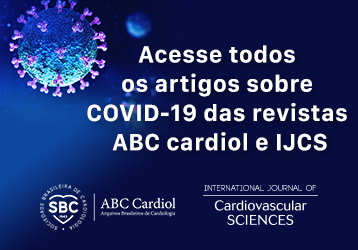Volume 31, Nº 6, Novembro e Dezembro 2018
DOI: http://www.dx.doi.org/10.5935/2359-4802.20180066
ARTIGO ORIGINAL
Option for the Radial versus Femoral Access in Coronary Intervention in Acute Coronary Syndromes: A Risk-Treatment Paradox
Yasmin Falcon Lacerda
Nicole Cruz de Sá
Jessica Gonzalez Suerdieck
Letícia Fonseca,1 Fernanda Lopes
Gabriella Sant'Ana Sodré
Mateus dos Santos Viana
Marcia Maria Noya Rabelo
Luis Claudio Lemos Correia
Dra. Yasmin Falcon Lacerda

Abstract
Background: In coronary procedures, although the radial approach protects patients from hemorrhagic complications, it is technically more complex than the femoral approach.
Objectives: To test the hypothesis that the radial approach is the procedure of choice in ACS patients due to the high risk of bleeding; and to identify independent predictors of the choice for radial access.
Methods: Patients admitted for ACS who underwent invasive coronary procedure were included. We registered the type of access (femoral or radial) chosen by the physician for the first angiography; the investigators did not interfere with this choosing process. Student’s t-test was used for comparisons between the CRUSADE and ACUITY scores. Predictors of radial access were compared between the groups. Statistical significance was defined by p < 0,05.
Results: Radial access was chosen in 67% of 347 consecutive patients. Patients who underwent radial approach had lower risk of bleeding determined by CRUSADE (30 ± 14 vs. 37 ± 15; p < 0.001) as compared with femoral access. In multivariate analysis, four variables were identified as independent predictors negatively associated with radial access – age (OR = 0.98; 95%CI = 0.96 – 0.99), creatinine (OR = 0.54; 95%CI = 0.3 – 0.98), signs of left ventricular failure (OR = 0.45; 95% CI = 0.22 – 0.92) and previous CABG (OR = 0.022; 95%CI = 0.003 – 0.166).
Conclusion: The propensity to choose radial over femoral access in coronary intervention was not primarily influenced by patients’ bleeding risk. Predictors of this decision, identified in the study, indicated less complex patients, suggesting that the difficulty in performing the technique was a stronger determinant than its potential antihemorrhagic effect. (Int J Cardiovasc Sci. 2018;31(6)562-568)
Keywords: Angioplasty; Catheterism; Coronary Artery Disease; Percutaneous Coronary Intervention; Radial Artery; Femoral Artery; Stents.











